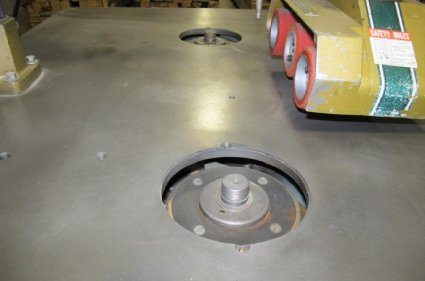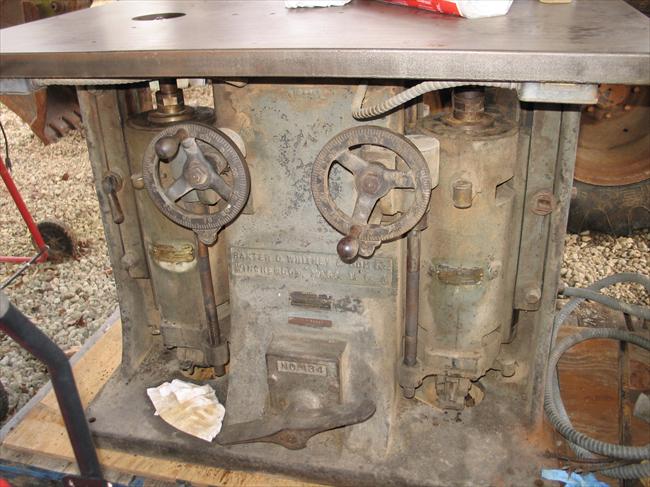Finding Spindles for an Old Shaper
This thread about locating parts for an old Whitney shaper has some interesting info on the way the old iron was built. June 30, 2014
Question (WOODWEB Member) :
I'm thinking about buying a Whitney 91 10hp double spindle shaper. I have some dedicated operations for which I don't need versatility (fancy fences) just a good cut. This 4000 lb machine should mill smoothly. Unfortunately there are no spindles on the stubs. I'd like to find a matching set of 1.25" spindles. Does anyone have an old Whitney setting around you're just using for a bench top? Or any leads to share? The first pic is the shaper stub in question. The second is a good shot of another machine to provide perspective.

Click here for higher quality, full size image

Click here for higher quality, full size image
Forum Responses
(Solid Wood Machining Forum)
From Contributor B:
If the purchase price is right, I'd consider going to a machine shop and ordering new. Chances are an old shaft salvaged from some other relic may be sprung anyway. I did this with my old shaper.
From contributor F:
I'd look into machining new spindles. Even with two new spindles those machines are priced low enough you would still be way ahead of the game. Of course without having an existing one to copy, makes things a bit more difficult? Just out of curiosity, what did the seller say happened to the spindles? Even if they're no good I would think they'd still be worth having to make copies of!
From the original questioner:
It was a machine at an auction and I had no chance to talk to the seller - natural question. My tooling company (in another state) suggested buying several nuts to test the perfect size and thread pattern on the stubs. Then they can modify some heads to work. Again, it doesn't have to be real spindles since the machine would be somewhat dedicated. Just some tooling that works on the stub.
From Contributor B:
I could be wrong but shaper spindles don't ever attach to a short stub such as in the picture. The spindle itself normally extends way down into the bearing housing and up through the table. Judging from the picture, it appears that the spindle housing is at its very lowest position. Have you tried cranking the wheel and raising the spindle (or is this another machine)?
From contributor F:
Some older shapers did have detachable spindles like the Whitney pictured. It was the way they did things before the Europeans improved upon it with tapered spindles. You could pop your 1" spindle off and install a 1-1/4" by unthreading it.
From contributor G:
You are looking for the spindle caps, not the actual spindle which is supported by the two bearings in the yoke. You have the thread-on style, one has a left hand thread, the other a right hand thread. If you look closely below the thread, you'll see a short area that is not threaded, then below that, a shoulder. These must be in very good condition. The alignment of the spindle cap is controlled by the diameter below the thread and the perpendicular shoulder below. Measure the thread and the diameter below. The spindle cap needs to have a very precise slip fit here, probably around .0004/.0008 slip and the end machined perfectly square. A good, cold drawn steel would be fine, but I would opt for 4130 or 4340 steel with a heat treat of RC 32-38 just to be safe. The lock down nut threads on top of the spindle need to have a key slot machined for a keyed washer. This way the cutter won't fly off when you stomp on the spindle brake. A shaper with 10 HP is nothing to mess with and the business end has to be very solid and precise.
From contributor A:
These are still available from Newman-Whitney. They are around $1400 each side. Also if you’re not familiar with this type of spindle cap, there is fitting required. The best way to do this is tighten the spindle cap on to the spindle. Measure the runout and mark the cap and spindle with a sharpie. Take a 180g PSA sanding disk and stick it to your machine top. Then remove your spindle cap and work the base of it on the sanding disk. Refit, measure, and repeat. Until you get .0005" or better. Good luck! If you watch you can buy two no.91 at auction for the same price as the spindle caps.

